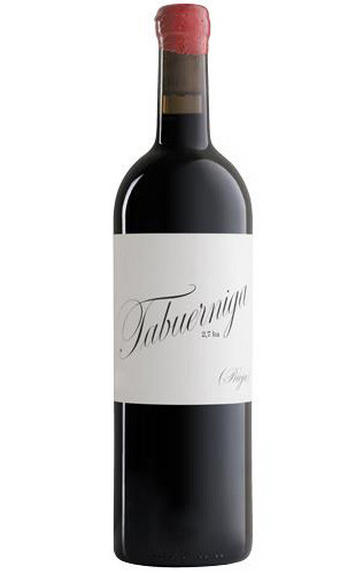
2020 Tabuerniga, Telmo Rodríguez, Rioja, Spain
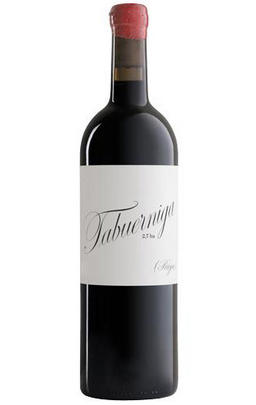
Critics reviews
The superb, complex and elegant 2020 Tabuerniga comes from a challenging year, as the vineyard was hit with hail. It fermented in open-top 3,000-liter oak vats with indigenous yeasts and matured in 1,500-liter oak foudres for 14 to 16 months. The Tabuérniga terraces were the first to be harvested in 2020, from the sixth of October, and still the wine has a moderate 14% alcohol.
It's elegant, expressive, clean, focused and balanced, combining power and elegance, with fine tannins and a long finish. 3,960 bottles were filled in April 2022. They have six hectares here, and they only produce this limited number of bottles.
Drink 2024 - 2034
Luis Gutiérrez, Wine Advocate (July 2023)
A complex and super nuanced Tabuerniga with just a twist of white pepper to the mineral, fresh berries, hibiscus and some umami savoriness. Vertical and powerful on the palate with fine-grained tannins. Broad yet refined. Very long.
James Suckling, JamesSuckling.com (August 2023)
Tabuérniga sits in an amphitheatre in Labastida, facing east towards San Vicente de la Sonsierra and is a series of terraces between 540 and 630 metres that add up to 2.7 hectares. Deeper in colour than the other single vineyard releases from Bodega Lanzaga, it has intense flavours of tangerine, blackberry and blood orange, lots of acidity, layered tannins and understated oak.
Drink 2025 - 2040
Tim Atkin MW, TimAtkin.com (February 2023)
About this WINE
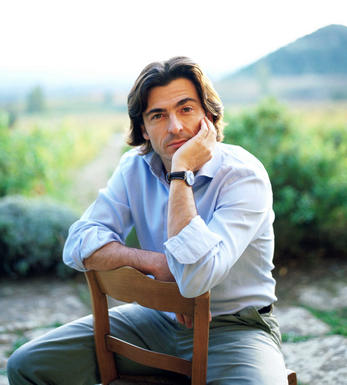
Telmo Rodriguez
Telmo Rodriguez is one of the great Spanish winemakers. He travelled and learnt for many years before returning home to Rioja. In addition, he supervises négociant projects throughout Spain. One of his most acclaimed projects is in Ribera del Duero.
The charismatic Telmo has something of the prodigal about him, having now returned to his Riojan homestead to energise the great house of Remelluri. One should not overlook, however, his other properties, which explore some of the lesser-known areas of Spain and in each case seek to make superlative and characterful wines. Ribera del Duero is far from a lesser-known area, so it is to Telmo’s great credit, but to no-one’s surprise, that the wines he makes at Matallana are amongst the very best here too.
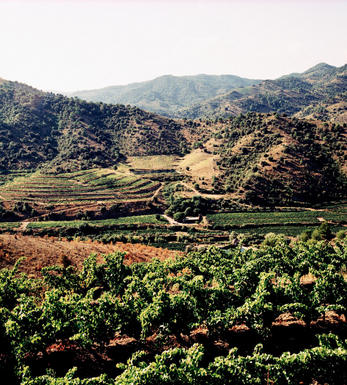
Rioja
Rioja is known primarily for its reds although it also makes white wines from the Viura and Malvasia grapes and rosés mainly from Garnacha. Most wineries (bodegas) have their own distinct red wine formula, but are normally a combination of Tempranillo, Garnacha and sometimes Graciano. Other red varieties recently approved into the Denominación de Origen Calificada (DOCa) regulations are the little-known Maturana Tinta, Maturana Parda, and Monastel (not to be confused with Monastrell). The most important of these by far is the king of native Spanish varieties, Tempranillo, which imbues the wines with complex and concentrated fruit flavours.
The Garnacha, meanwhile, bestows its wines with warm, ripe fruit and adds an alcohol punch. Graciano is an améliorateur grape (one that is added, often in small proportions, to add a little something to the final blend) and is found mainly in Reserva and Gran Reserva wines, albeit in small quantities (two to five percent), adding freshness and aroma, and enhancing the wines' ageing potential.
Crianza wines are aged for one year in oak followed by maturation for one year in bottle before being released for sale. Reservas must undergo a minimum of three years’ ageing before release, at least one of which should be in oak casks. Finally, Gran Reservas, which are only produced in the finest vintages, must spend at least five years maturing, of which at least two must be in oak.
Geographically, Rioja is divided in to three districts: Alavesa, Alta and Baja. Rioja Alavesa lies in the northwest of the La Rioja region in the Basque province of Álava. Along with Rioja Alta, it is the heartland of the Tempranillo grape. Rioja Alta, to the north-west and south of the Ebro River in the province of La Rioja, stretches as far as the city of Logroño. Elegance and poise is the hallmark of wines made here with Rioja Alta Tempranillo. Mazuelo (Carignan) is occasionally added to wines from this area to provide tannins and colour. Rioja Baja, located to the south-east, is the hottest of the three districts and specialises in Garnacha.
Rioja has witnessed a broad stylistic evolution over the years. The classic Riojas pioneered by Murrieta and Riscal in the 19thcentury were distinguished by long oak-barrel-ageing whereas the modern style, represented by Marqués de Cáceres since 1970, showcases the fruit and freshness of Tempranillo, keeping oak ageing to the legal minimum. The post-modern school that emerged in the late 1990s from producers like Palacios Remondo and Finca Allende concentrate on making wines from old vines or specific vineyard plots to accentuate the terroir, and using larger proportions of minority varietals such as Graciano.
The alta expression wines, pioneered by Finca Allende (among others) and later taken up by almost every other producer in Rioja, represent the newest flagship category in Rioja. Alongside the traditional Gran Reservas, alta expression wines are limited production and come from low-yielding vines, often from a single vineyard, and are hand-picked. Excellent examples of this style are Artadi's Pagos Viejos and El Pison.
However, modernisation has not held back the continuation of successful traditional styles as well. Happily long-established houses such La Rioja Alta, CVNE and Marques de Vargas continue to make graceful, old style wines better than ever before.
White Rioja is typically produced by the Viura grape which must comprise at least 51 percent of the blend; the rest can be made up by other, recently-authorised varieties, namely Sauvignon Blanc, Chardonnay and Verdejo, as well as the native Maturana Blanca, Tempranillo Blanco, and Turruntés (not to be mistaken for Torrontés).
Recommended Producers:
Finca Allende, Amezola de la Mora, Artadi, CVNE, Marqués de Vargas, Palacios Remondo, La Rioja Alta, Murrieta.
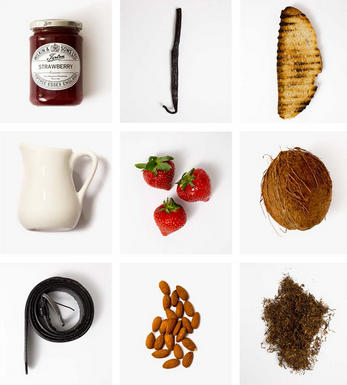
Tempranillo/Tinto Fino
A high quality red wine grape that is grown all over Spain except in the hot South - it is known as Tinto Fino in Ribera del Duero, Cencibel in La Mancha and Valdepenas and Ull de Llebre in Catalonia. Its spiritual home is in Rioja and Navarra where it constitutes around 70% of most red blends.
Tempranillo-based wines tend to have a spicy, herbal, tobacco-like character accompanied by ripe strawberry and red cherry fruits. It produces fresh, vibrantly fruit driven "jovenes" meant for drinking young. However Tempranillo really comes into its own when oak aged, as with the top Riojas where its flavours seem to harmonise perfectly with both French and American oak, producing rich, powerful and concentrated wines which can be extraordinarily long-lived.
In Ribera del Duero it generally sees less oak - the exception being Vega Sicilia where it is blended with Cabernet Sauvignon and Merlot and then aged for an astonishing 7 years in oak and is unquestionably one of the world`s greatest wines.


Buying options
Add to wishlist
Description
This unique wine from a 2.7-hectare organic site on historic terraces in a tiny, narrow valley in Rioja celebrates a winemaking tradition in the region that goes back over 1,300 years. The nose is fine with fresh red and black hedgerow berry aromas that brim out of the glass with astonishing purity.
The nose is entirely focused with a concentrated, poised cherry blossom lift. The wine has wonderful freshness with an almost rosehip brightness alongside the incredibly fine, elegant tannins. Everything is held in perfect balance with the depth of fruit flavour in perfect suspension on the palate. Only 3,960 bottles of this wine were made, which is utterly fabulous.
Drink 2025 to 2040
Catriona Felstead MW, Senior Buyer, Berry Bros. & Rudd (October 2023)
Another knockout wine from a growing Spanish favourite of mine. This fresh, lively Rioja steps away from overbearing oak to champion a sense of place.
At the front of the palate, the red and blue fruits are unctuous and soft for a moment until the rocky mineral structure whips the palate into shape, and the sharp structure is evidence of refined terroir.
The profile boasts fresh herbs, aromatic fennel, wet slate, black tea leaves and a touch of spicy cracked white pepper.
Amy Johnson, Account Manager, Berry Bros. & Rudd (October 2023)
wine at a glance
Delivery and quality guarantee